This is Part 6 in the series “How to Build a Rainwater Collection System”. Click to see parts one, two, three, four and five.
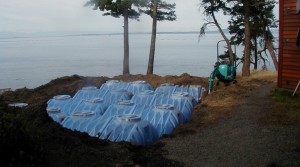 Are you concerned with the aesthetics of above ground water storage? Then underground storage may be right for you.
Are you concerned with the aesthetics of above ground water storage? Then underground storage may be right for you.
Underground storage tanks need to be structurally engineered to withstand the inward pressures of back filling and compacting. Most will need to be weighted down so ground water will not “float” the tank when empty. It is advised that a curtain drain be installed at bottom of excavation to allow excess ground water to drain away for the same reason.
Buried tanks can be fiberglass, plastic, and cement. Large sizes (over 2,000 gallons) tend to be fiberglass, while smaller plastic tanks (up to 2,000 gallons) can be manifolded together to achieve the desired capacity. Cement tanks should be lined with a poly liner and “mono poured” when constructed.
Other specialty tanks consist of modular which are may be buried and bladder or pillow tanks that can be placed in crawl spaces.
Check the box below to follow RainBank and stay informed of all things Rainwater Harvesting.

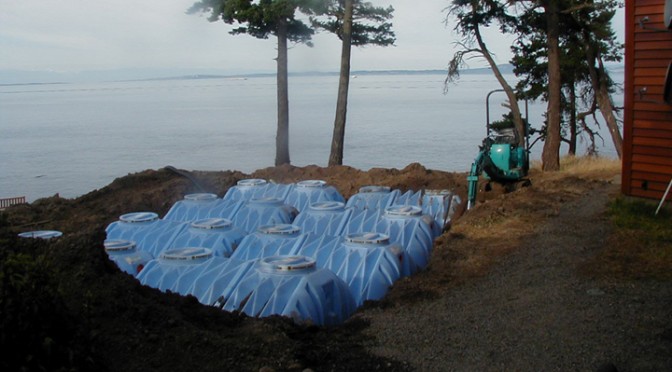
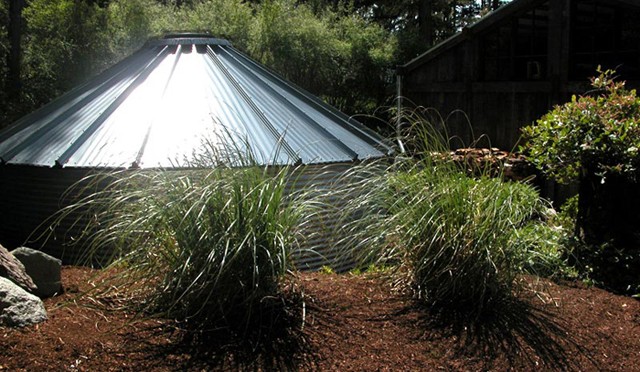
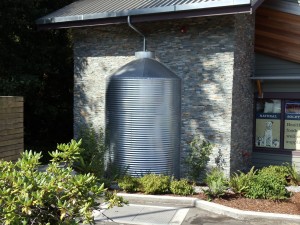 Steel water storage tanks for rainwater collection are generally bolted together grain silos adapted for this use. Made of galvanized corrugated steel panels, wall panels average 17 – 20 gauge with the galvanized roof panels being high rib or flat seam with a center hatch at the top and an access hatch near the bottom of the roof. A felt pre-liner is used between the steel and the main liner to protect it from abrasion. Liners are usually polyethylene and NSF approved when used for potable application or PVC, which is generally used for non-potable. However, PVC can be used for potable, as long as it is NSF approved. RainBank recommends polyethylene for this application.
Steel water storage tanks for rainwater collection are generally bolted together grain silos adapted for this use. Made of galvanized corrugated steel panels, wall panels average 17 – 20 gauge with the galvanized roof panels being high rib or flat seam with a center hatch at the top and an access hatch near the bottom of the roof. A felt pre-liner is used between the steel and the main liner to protect it from abrasion. Liners are usually polyethylene and NSF approved when used for potable application or PVC, which is generally used for non-potable. However, PVC can be used for potable, as long as it is NSF approved. RainBank recommends polyethylene for this application.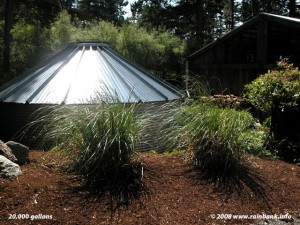 Steel water storage tanks offer durability and protection of the liner from UV rays, plus offers an industrial or rural architectural look. Many commercial applications use this type of storage for both of these reasons. Overflow lines can be installed on the outside of the tank, but it is recommended that any pressurized lines be underground and frost protected in our Washington climate.
Steel water storage tanks offer durability and protection of the liner from UV rays, plus offers an industrial or rural architectural look. Many commercial applications use this type of storage for both of these reasons. Overflow lines can be installed on the outside of the tank, but it is recommended that any pressurized lines be underground and frost protected in our Washington climate.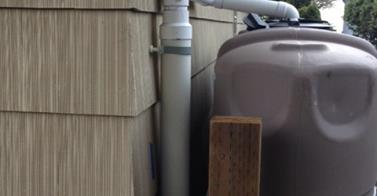
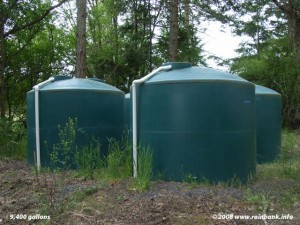 This is Part 4 in the series “How to Build a Rainwater Collection System”. Click to see parts
This is Part 4 in the series “How to Build a Rainwater Collection System”. Click to see parts 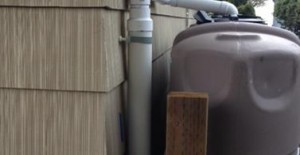 Sizes vary from a simple 50 gallon rain barrel all the way up to 10,000 gallons. All should have a UV protection warranty for at least 8 years. Dark colors are recommended to alleviate light penetration which can cause algae growth. Multiple tanks can be manifolded together to achieve the volume of storage needed. Keep in mind that plumbing should be under ground for frost protection.
Sizes vary from a simple 50 gallon rain barrel all the way up to 10,000 gallons. All should have a UV protection warranty for at least 8 years. Dark colors are recommended to alleviate light penetration which can cause algae growth. Multiple tanks can be manifolded together to achieve the volume of storage needed. Keep in mind that plumbing should be under ground for frost protection.